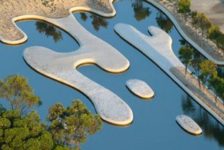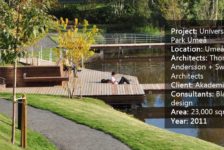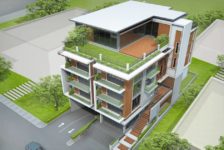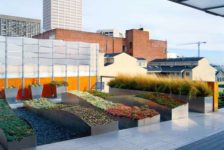The Floating Gardens by Turenscape The term “floating gardens” usually brings to mind the famous Chinampas or the historical vegetable gardens planted by Aztec communities in the shallow lakes of Mexico that date back to two thousand years. But in 2004, an added value was brought forth to the term when world renowned Chinese landscape architecture firm Turenscape used it as a title for their Yongning River Park. The Mission: Aims and Challenges The design of this park was a response to a request made by Taizhou City, East Coast China to upgrade the park site along the riverside which was embanked with concrete as part of the local flood control policy. The task proved to be challenging, as the landscape architect sought an alternative and more ecological approach to flood control and storm water management that would at the same time have easy access to both tourists and locals.
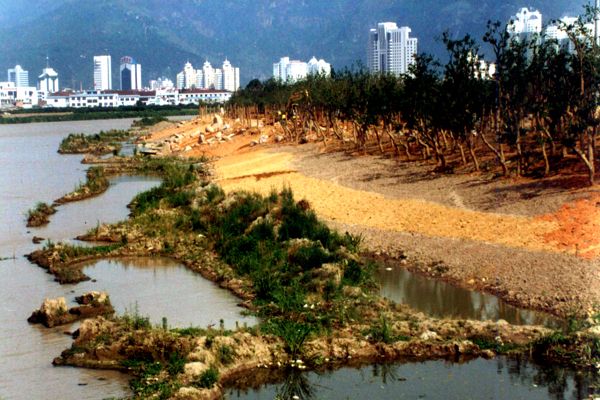
The park under development: Concrete was removed, diverse terrain on the river bed and along the riparian plane were laid to create various habitats for native plants, and the river bank was graded, allowing for people to access the water; credit: Turenscape
Firstly, an effort had to be made to convince the local authorities about the ecological, social and economic negative effects of channelizing the river with concrete. Those mainly included the destruction of the edge conditions of the inter-tidal zones, insensitivity to the symbolic, cultural and historical value of the space as well as it being an expensive measure. They wanted to come up with an alternative solution that would serve as a model for all the rivers in China that suffered from the same misfortune of being canalized with concrete. The other crucial task was to make the park multifunctional and turn it into a fusion of wildlife sanctuary and a space of inclusive social interaction.
Recommended reading: The Art of Survival: Turenscape Architects by Loft Publications

Incredible scenes created at the Floating Garden; credit: Turenscape
To implement the vision of the ‘Floating Gardens’, Turenscape created a design composed of two layers: the natural matrix and the human matrix. Initially however, in order to come up with a proper flood control solution, the team drew on storm water process analysis that demonstrates the flood security patterns at every 5, 20 and 50 years level.
See Slideshare below for the full graphic. 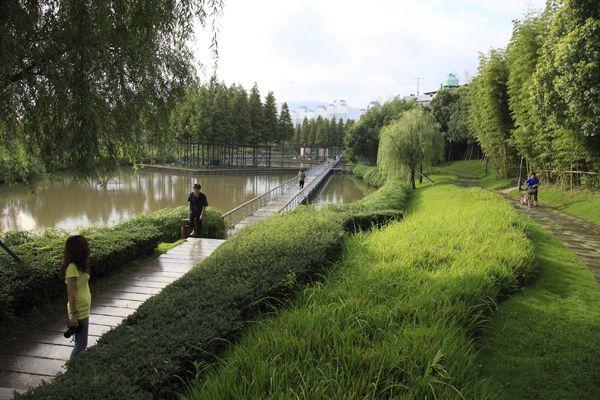
Lush vegetative planting at the Floating Gardens; credit: shutterstock.com
The natural matrix and alternative flood control system was composed of a restored riparian wetland along the flood plain and an outer wetland (lake) outside of the river bank that runs parallel to the river. During the monsoon season, both the riparian wetland and the outside wetland are flooded. During the dry season, the outer wetland is still submerged from both the retained water and fresh water from the inlet located in the upper reach of the river.
The design of the upper layer, or the floating ‘human’ gardens, ensures the park’s accessibility all year round as it ‘floats’ above the natural matrix. A series of planted groves of native trees, in harmony with the native wetland plants and bamboos along the riverbank, promote the continuity of the design with the surrounding ecosystem.
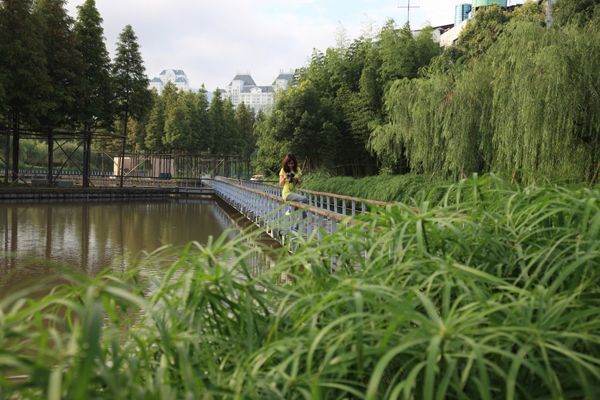
The Floating Gardens; credit: Turenscape
A network of paths extends from the urban fabric downwards, guiding through a series of ‘story boxes’ which introduce the culture and history of the native land and people. Placed at strategic points in the landscape, these separate boxes comprise of a box of rice,fish, hardware crafts, Taoism, stone,mountain and water, citrus and a box of martial arts. These human scale boxes create a unique contrast with the endless surrounding riparian landscape.
Below: Enjoy all the incredible pictures of The Floating Gardens courtesy of Turenscape
The phenomenon of overusing concrete, especially when damaging to the natural or cultural landscape, is not only present in China but sadly has become global. The significance of projects such as ‘Floating Gardens’ lies not only in their high aesthetic and functional qualities, but also in their ability to showcase that stubborn dead interventions such as concrete canalizing or sea landfill lead to the detriment of creativity in design rather than its development.
Name of Project: The Floating Gardens—-Yongning River Park Project Location (city/state/zip): Taizhou City, Zhejiang Province, China Project Type (park, commercial campus, memorial, etc.): park Date of Completion: March 2004 Owner/Client: The Government of Huanyan District, Taizhou City Other articles Turenscape featured in: Top 10 Names In Landscape Architecture Today Top 10 Names in Planting Design Article written by Dalia Zein.
Published in Blog





